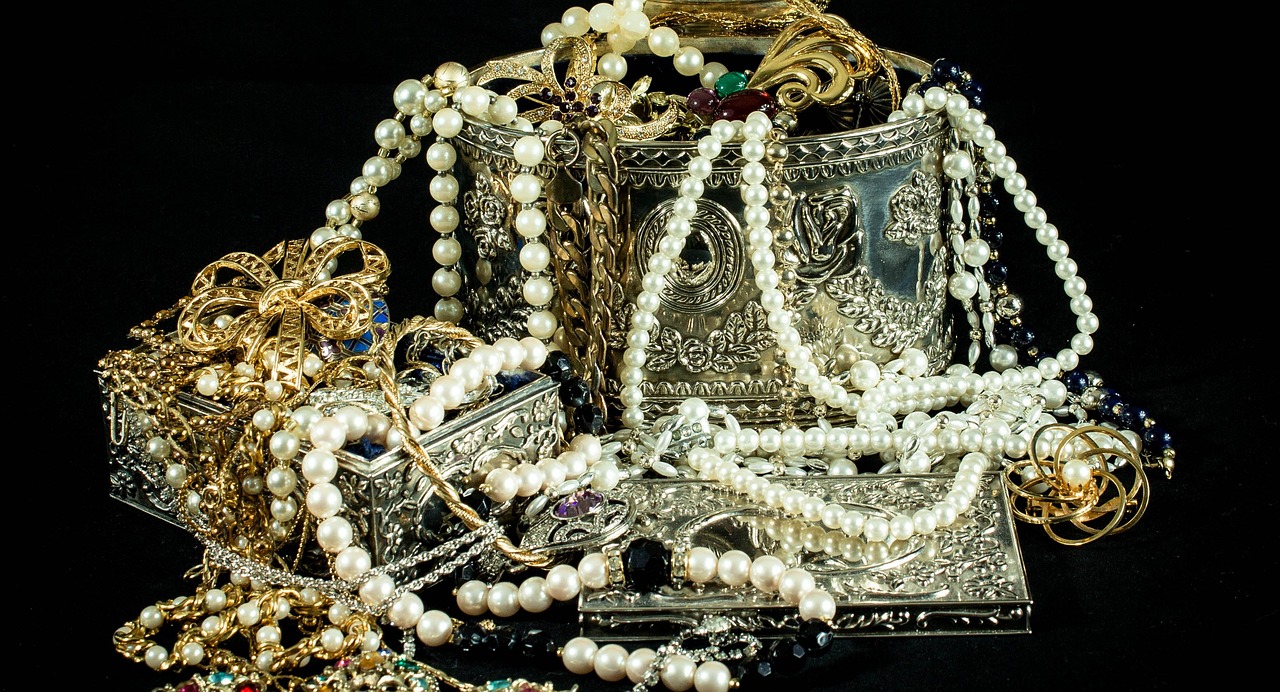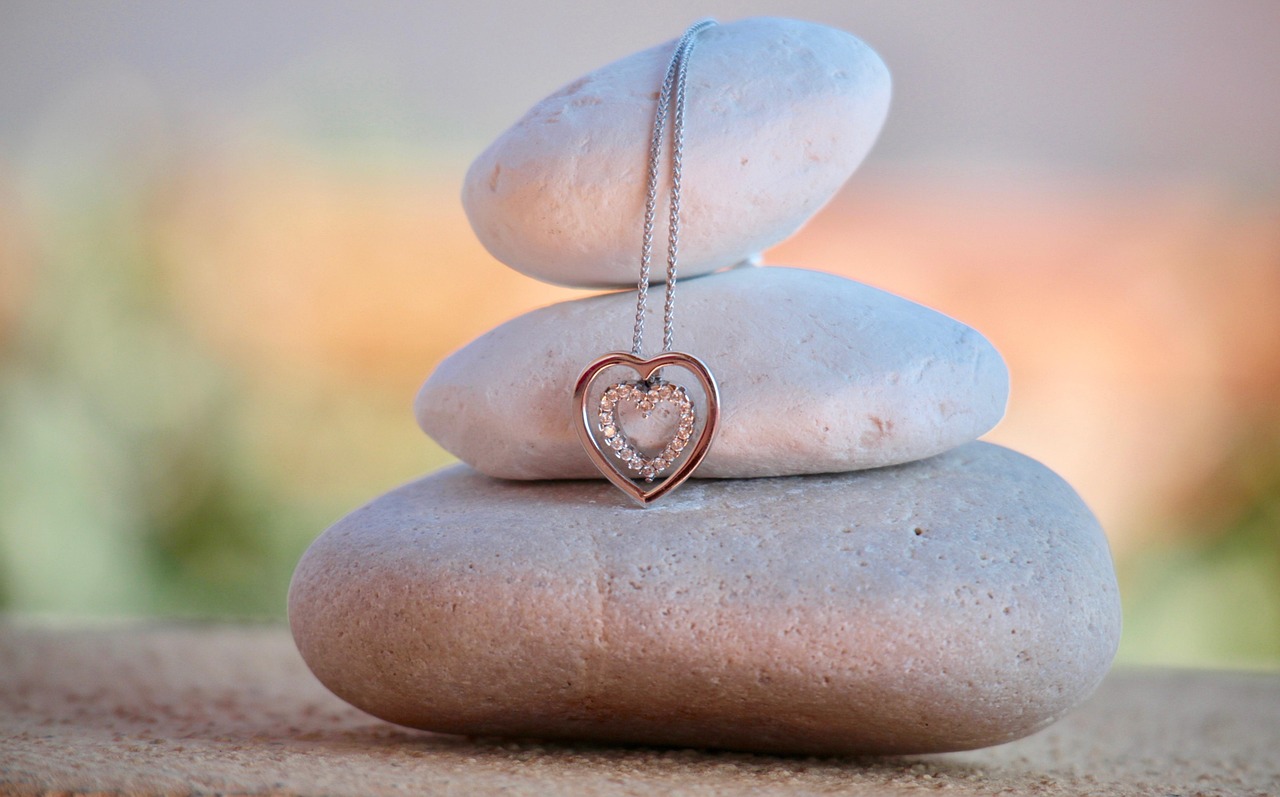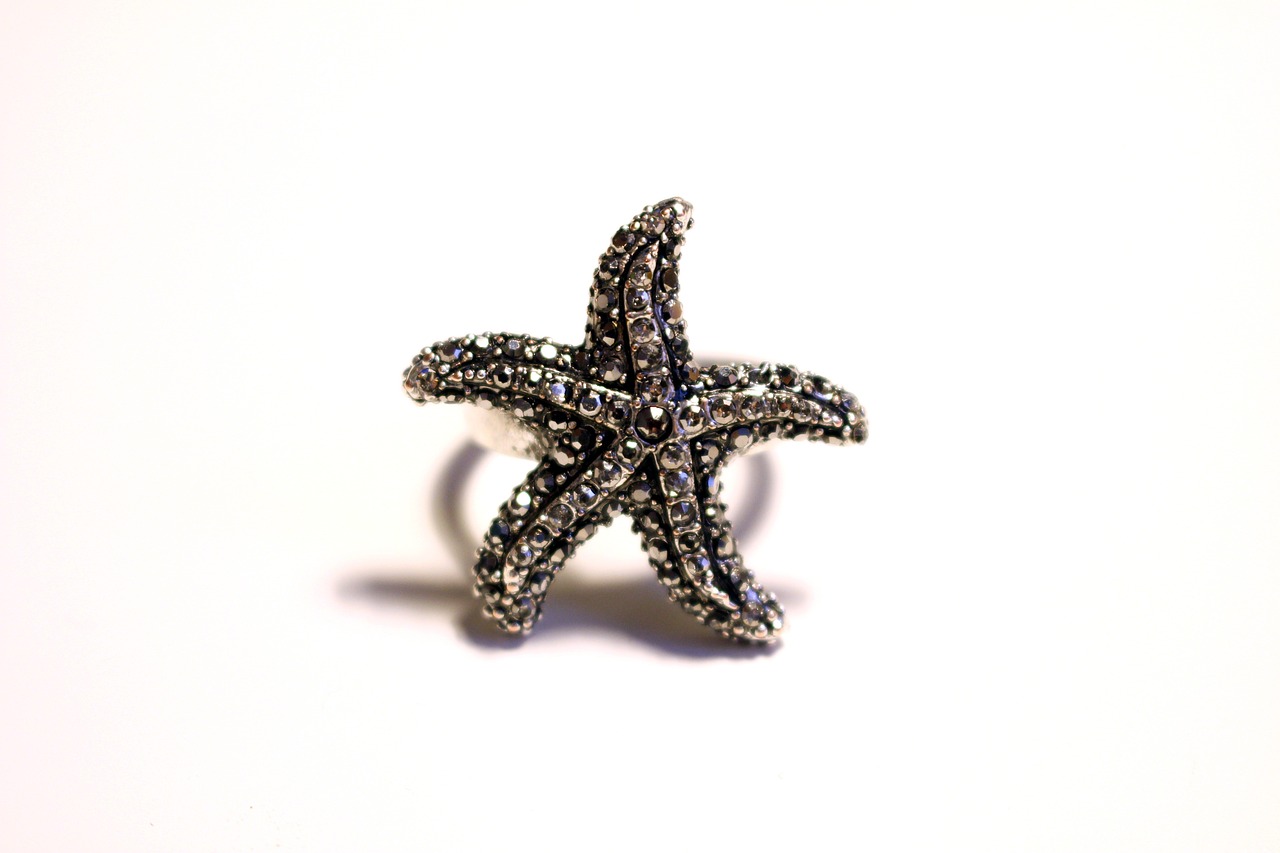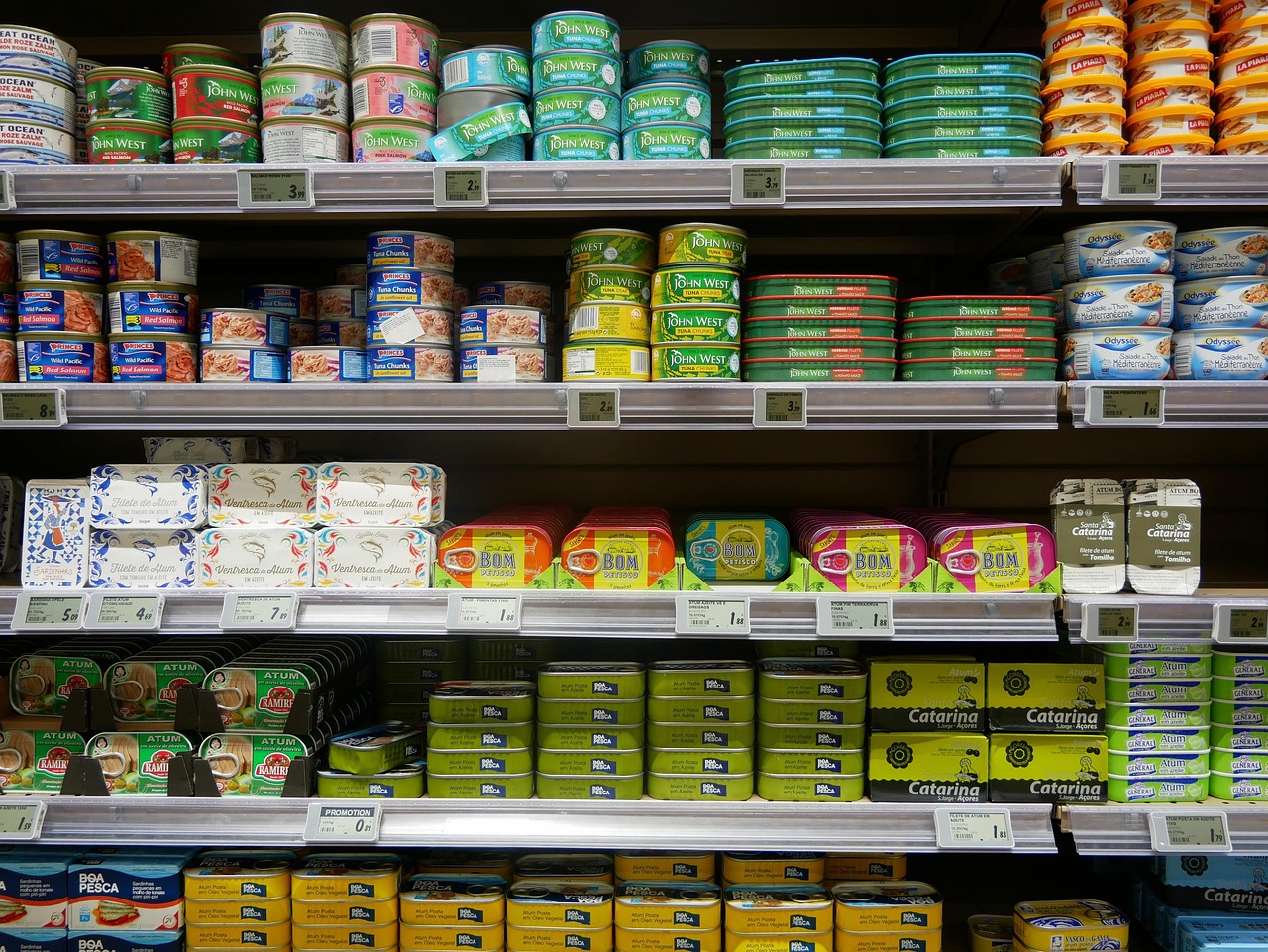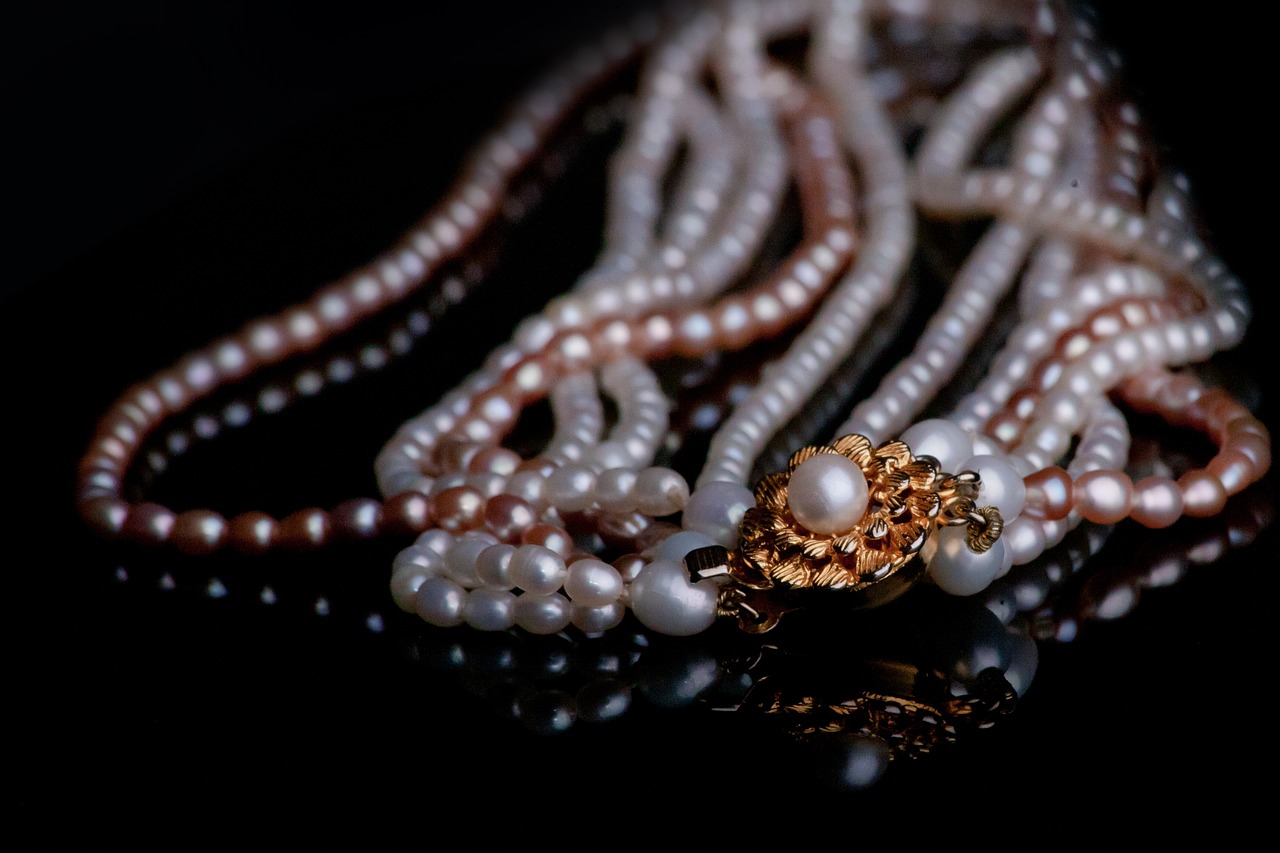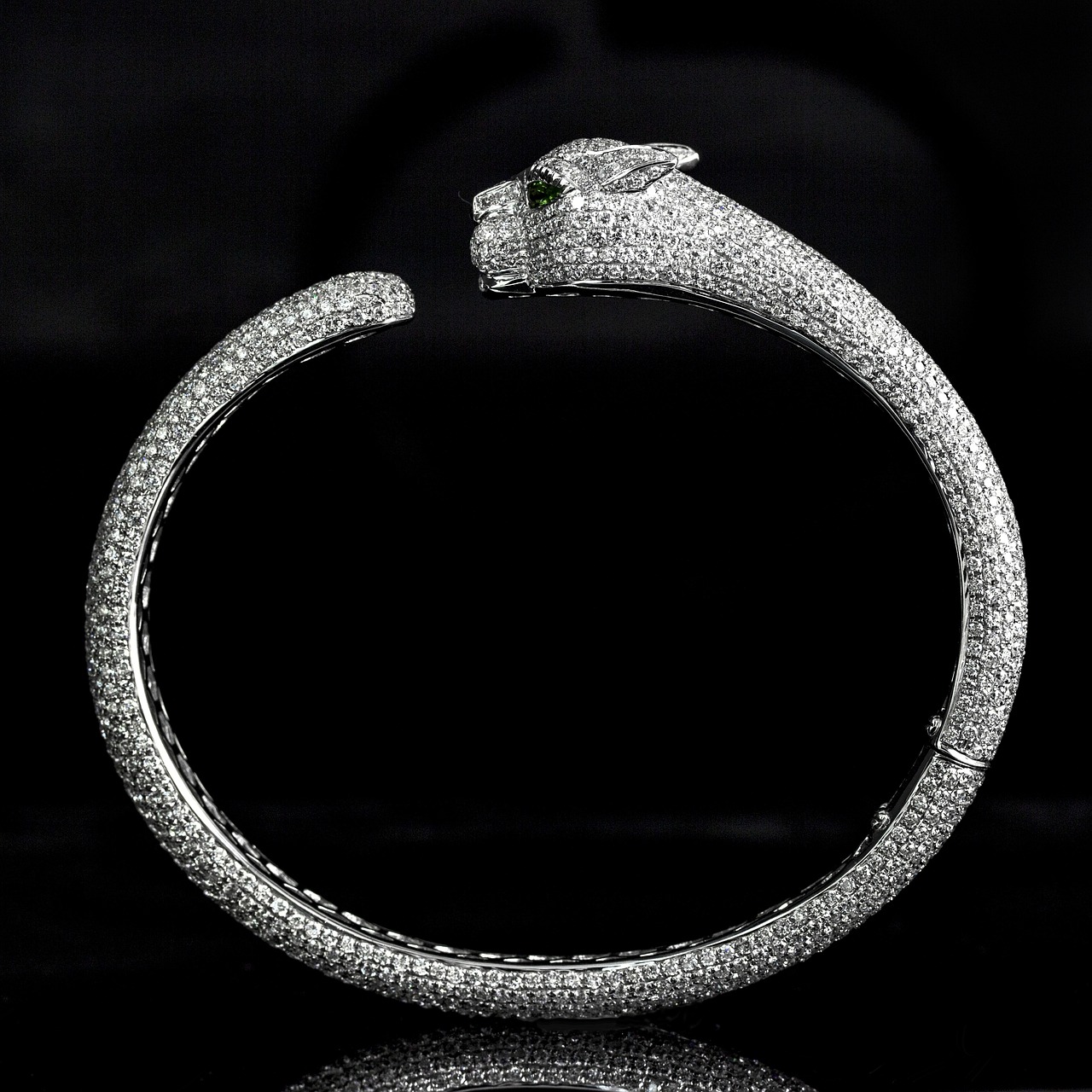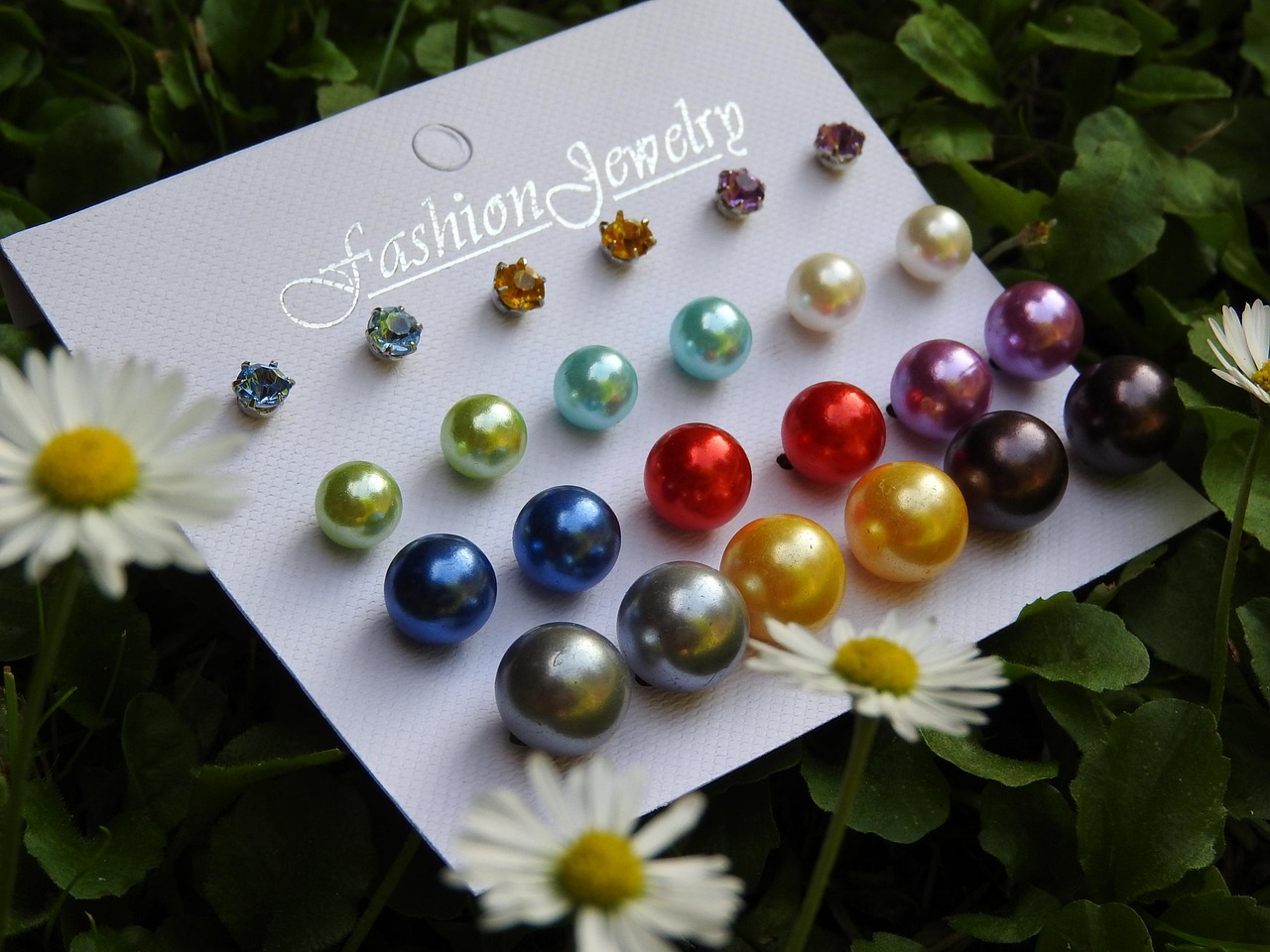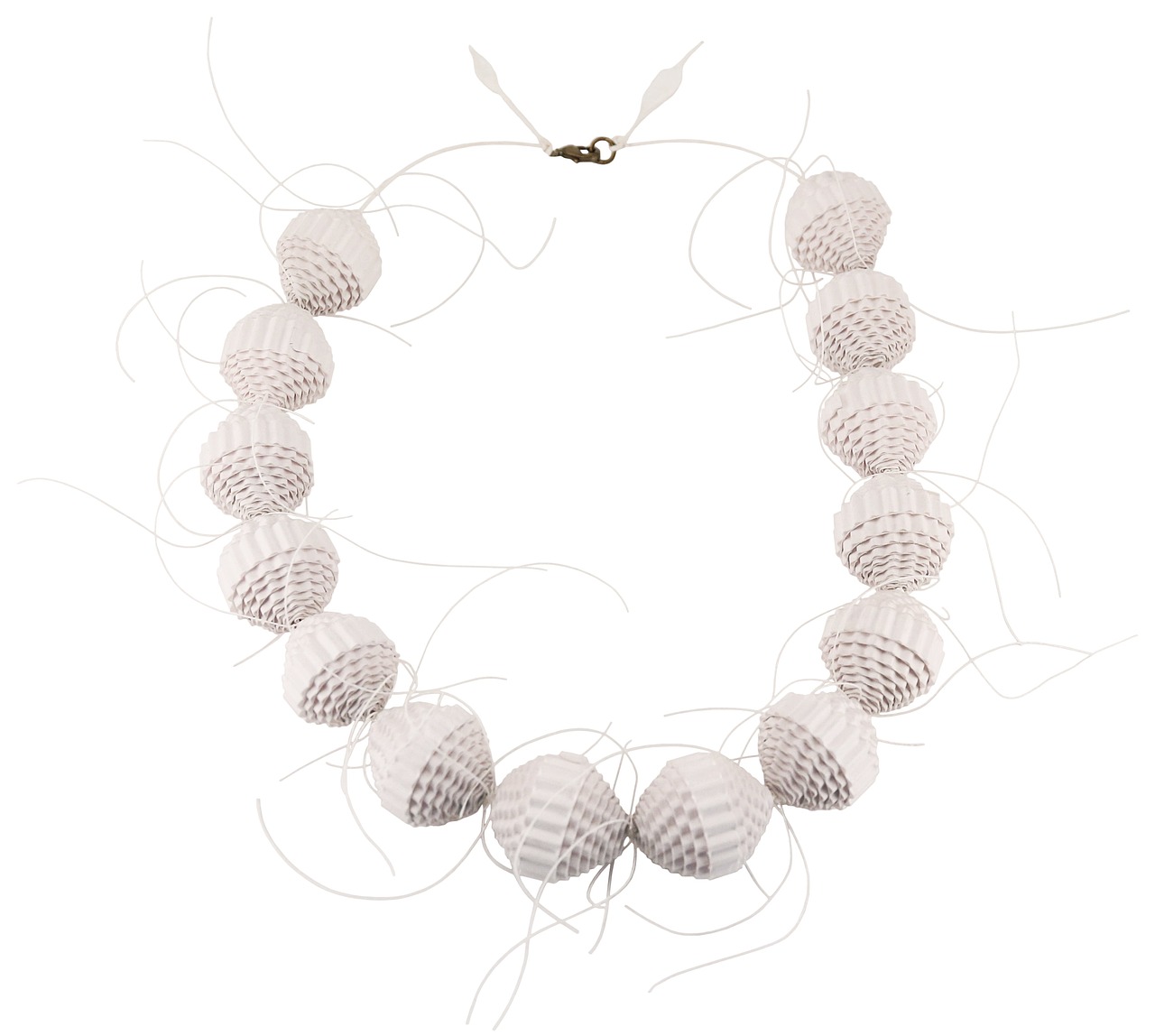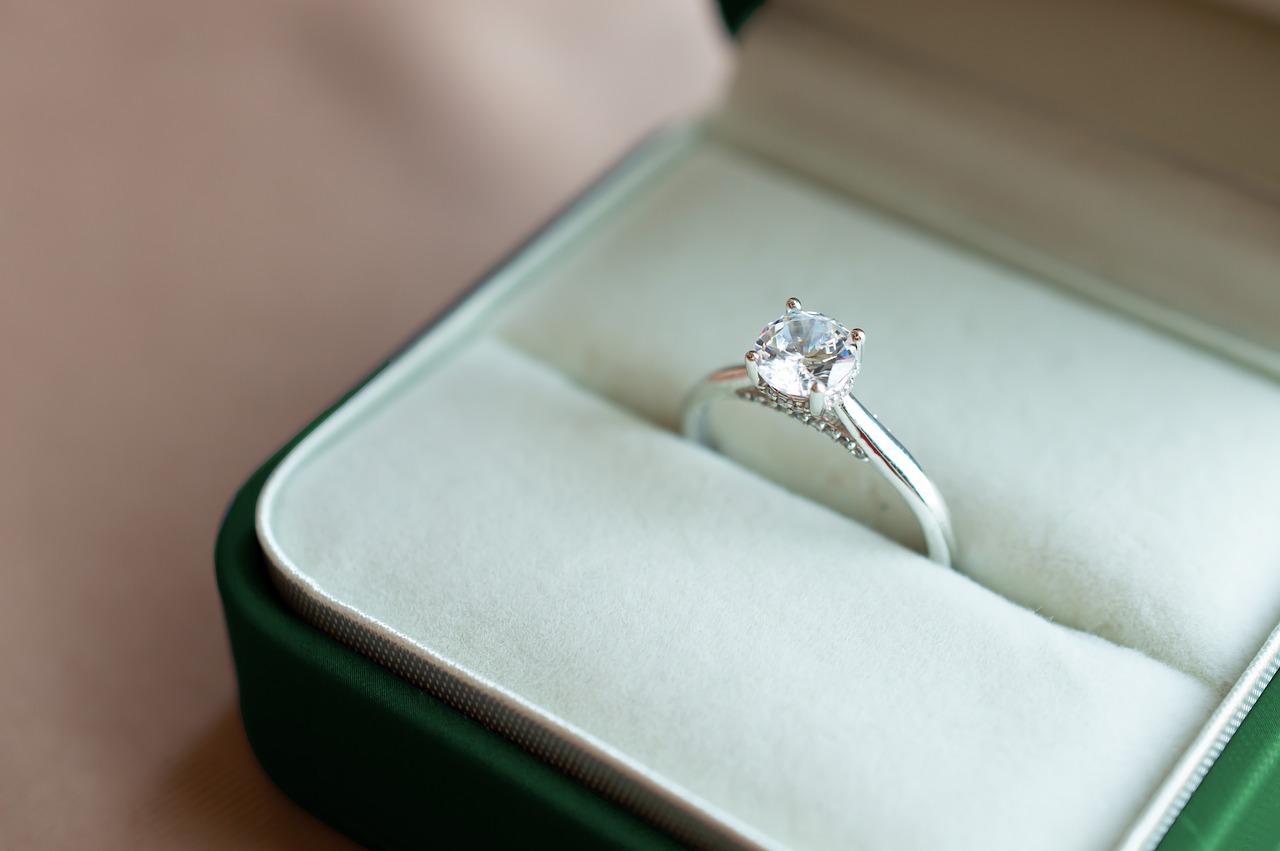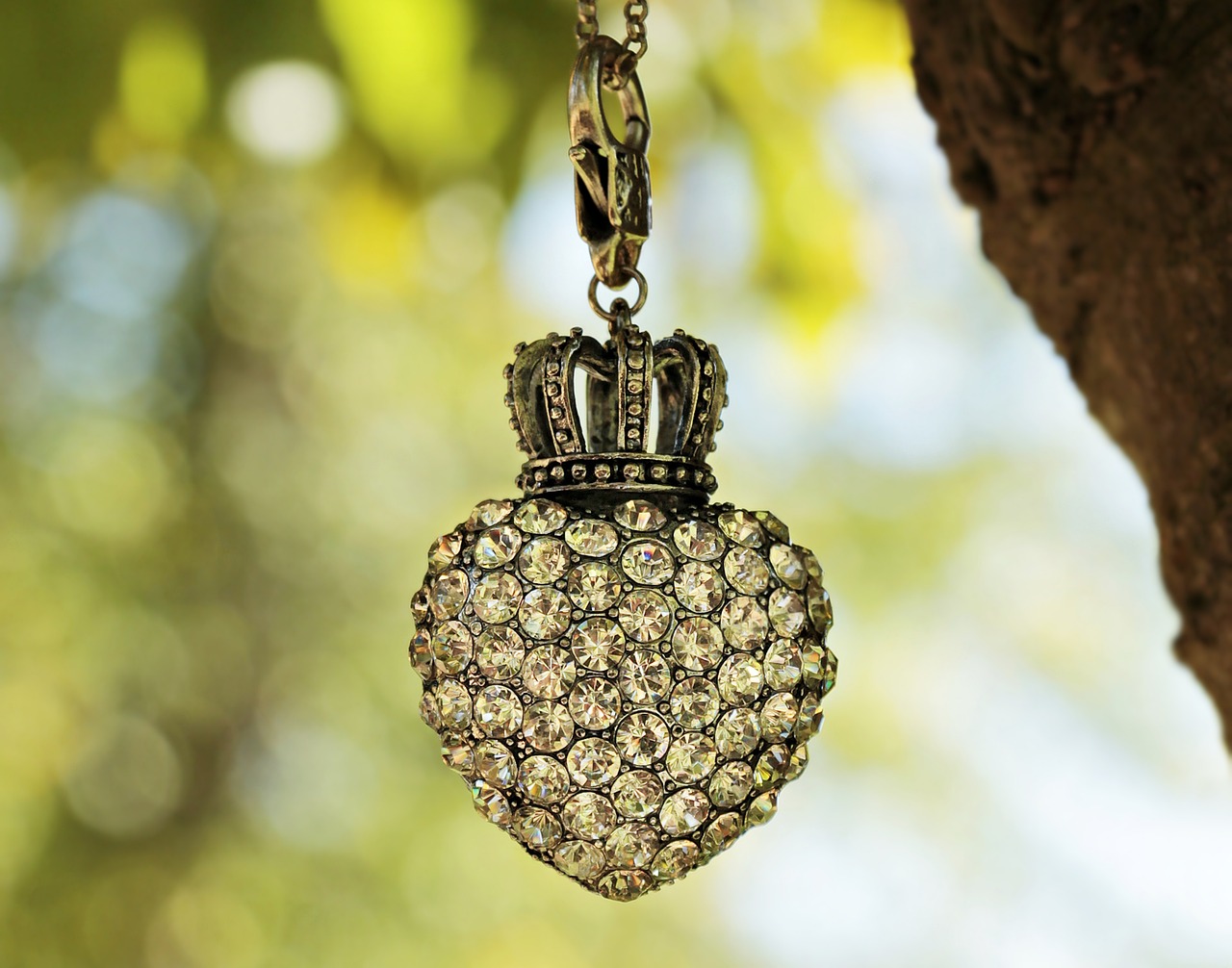The demand for ethical and sustainable jewelry in the United States is rapidly increasing as consumers become more conscious of the impact their purchases have on the environment and society. This article delves into this growing trend, highlighting key retailers, innovative designers, and practices that prioritize both environmental and social responsibility.
Ethical jewelry refers to pieces that are created with a commitment to fair labor practices and sustainable sourcing. This means that the materials used are often recycled or sourced from conflict-free zones, ensuring that the artisans and workers involved are treated fairly and compensated appropriately. Understanding these principles is crucial for consumers seeking responsible choices.
There are numerous reasons to opt for sustainable jewelry. Firstly, it contributes to environmental conservation by reducing waste and minimizing the carbon footprint associated with traditional jewelry production. Additionally, purchasing sustainable pieces supports local artisans and communities, fostering economic growth and cultural preservation. Consumers are increasingly aware of these benefits, leading to a shift in buying habits.
Several brands stand out in the U.S. for their commitment to ethical practices. Notable names include:
- Brilliant Earth – Known for its conflict-free diamonds and eco-friendly practices.
- Vrai – Offers lab-grown diamonds and a transparent supply chain.
- Catbird – A Brooklyn-based brand that uses recycled materials and supports local artisans.
Identifying genuine ethical jewelry can be challenging. Here are some practical tips:
- Look for certifications such as Fair Trade or Responsible Jewelry Council.
- Research the brand’s sourcing practices and transparency.
- Check for the use of recycled materials or lab-grown stones.
Supporting local artisans is a fantastic way to find unique, ethical jewelry. Many cities host artisan markets and fairs where local designers showcase their work. These events not only provide an opportunity to purchase one-of-a-kind pieces but also allow consumers to engage directly with the makers, learning about their processes and the stories behind their creations.
The rise of e-commerce has made it easier than ever to discover and purchase ethical jewelry. Popular online platforms include:
- Etsy – A marketplace for independent artisans.
- Made Trade – Focuses on ethically made goods.
- Amazon Handmade – Features handcrafted items from artisans around the world.
Understanding the materials used in ethical jewelry is essential for making informed choices. Common sustainable materials include:
- Recycled metals – Reduces the need for new mining.
- Conflict-free gemstones – Ensures that stones are sourced responsibly.
- Lab-grown diamonds – Offer a sustainable alternative to traditional diamonds.
Ethical jewelry has a profound impact on local communities. By supporting fair labor practices and sustainable sourcing, these practices promote economic growth, empower artisans, and preserve cultural heritage. Additionally, they encourage consumers to think critically about the origins of their purchases, fostering a more informed and responsible marketplace.
The ethical jewelry market is continuously evolving, with emerging trends such as the increased use of technology in sourcing and production, and a growing emphasis on transparency in supply chains. As consumer demand for ethical options continues to rise, we can expect to see more innovative designs and practices that prioritize both sustainability and style.

What is Ethical Jewelry?
As consumers become more conscious of their purchasing decisions, the demand for ethical jewelry has surged. Understanding what constitutes ethical jewelry is essential for those seeking to make responsible choices that reflect their values. This article will explore the fundamental principles of ethical jewelry, including fair labor practices and sustainable sourcing.
Ethical jewelry refers to pieces that are created with a commitment to social and environmental responsibility. This means that the materials used, such as metals and gemstones, are sourced in a way that minimizes harm to the planet and supports the communities involved in their extraction and crafting. The ethical jewelry movement emphasizes transparency, ensuring that consumers can trace the origins of their jewelry and understand the impact of their purchases.
- Fair Labor Practices: Ethical jewelry brands prioritize fair wages and safe working conditions for artisans and workers. This is crucial in a global industry that often exploits labor in developing countries. By supporting brands that adhere to fair labor standards, consumers can contribute to the well-being of workers and their communities.
- Sustainable Sourcing: The sourcing of materials is another cornerstone of ethical jewelry. Many ethical jewelers utilize recycled metals and conflict-free gemstones. This not only reduces the demand for mining, which can be environmentally damaging, but also ensures that the gemstones are not associated with violence or human rights abuses.
- Environmental Impact: Ethical jewelry brands often implement practices that reduce their carbon footprint. This can include using eco-friendly packaging, minimizing waste, and employing renewable energy sources in their production processes.
Furthermore, the rise of ethical jewelry has led to an increase in certifications and standards that help consumers identify truly ethical brands. Look for organizations that provide certifications for ethical sourcing and fair trade practices. These certifications can serve as a guide, helping consumers make informed choices when shopping for jewelry.
In addition to individual brands, the broader movement towards ethical jewelry is also supported by various initiatives and organizations that advocate for sustainable practices within the industry. These groups often provide resources, education, and support to both consumers and jewelers, fostering a community dedicated to ethical consumption.
As the landscape of jewelry continues to evolve, understanding the principles that define ethical jewelry is more important than ever. By choosing pieces that align with these values, consumers not only enhance their personal style but also contribute to a more sustainable and equitable world.
Ultimately, ethical jewelry is about more than just aesthetics; it embodies a commitment to making choices that reflect our values and priorities. Whether you are purchasing a piece for yourself or as a gift, opting for ethical jewelry ensures that you are supporting practices that promote social responsibility and environmental stewardship.

Why Choose Sustainable Jewelry?
In recent years, the demand for sustainable jewelry has surged as consumers become more aware of the impact their purchasing decisions have on the environment and society. This shift reflects a broader movement towards ethical consumption, where individuals seek to make choices that align with their values. So, why should you choose sustainable jewelry? Let’s explore the multifaceted benefits of opting for these eco-friendly and socially responsible adornments.
- Environmental Conservation: One of the primary reasons to choose sustainable jewelry is its significant contribution to environmental conservation. Traditional jewelry production often involves harmful mining practices that lead to deforestation, pollution, and habitat destruction. In contrast, sustainable jewelry brands prioritize the use of recycled materials and ethically sourced gemstones, minimizing their ecological footprint.
- Support for Local Artisans: By purchasing sustainable jewelry, you are often supporting local artisans and small businesses. These creators typically use traditional methods, which not only preserve cultural heritage but also provide fair wages and safe working conditions. This support helps to strengthen local economies and fosters a sense of community.
- Unique and Artistic Designs: Sustainable jewelry often features unique designs that stand out from mass-produced items. Many artisans take pride in their craftsmanship, resulting in pieces that are not only beautiful but also tell a story. This individuality allows consumers to express their personal style while making a responsible choice.
- Transparency and Accountability: Many sustainable jewelry brands are committed to transparency in their sourcing and production processes. This means that consumers can feel confident that their purchases are not contributing to unethical practices, such as child labor or conflict mining. Brands often provide information about their materials and labor practices, allowing for informed decisions.
- Long-lasting Quality: Sustainable jewelry is often crafted with care and attention to detail, resulting in high-quality pieces that stand the test of time. Unlike fast fashion jewelry, which may tarnish or break easily, sustainable options are designed to be durable and timeless, making them a worthwhile investment.
- Positive Impact on Communities: The ripple effect of choosing sustainable jewelry extends beyond individual purchases. By supporting ethical brands, consumers contribute to initiatives that promote social responsibility, environmental stewardship, and community development. This collective effort can lead to significant positive changes in the lives of artisans and their communities.
As consumers increasingly prefer sustainable options, the jewelry industry is adapting to meet this demand. By choosing sustainable jewelry, you not only enhance your personal style but also make a meaningful contribution to the world around you. The benefits are clear: from environmental conservation and supporting local artisans to promoting ethical practices and ensuring quality, sustainable jewelry represents a responsible choice for the modern consumer.
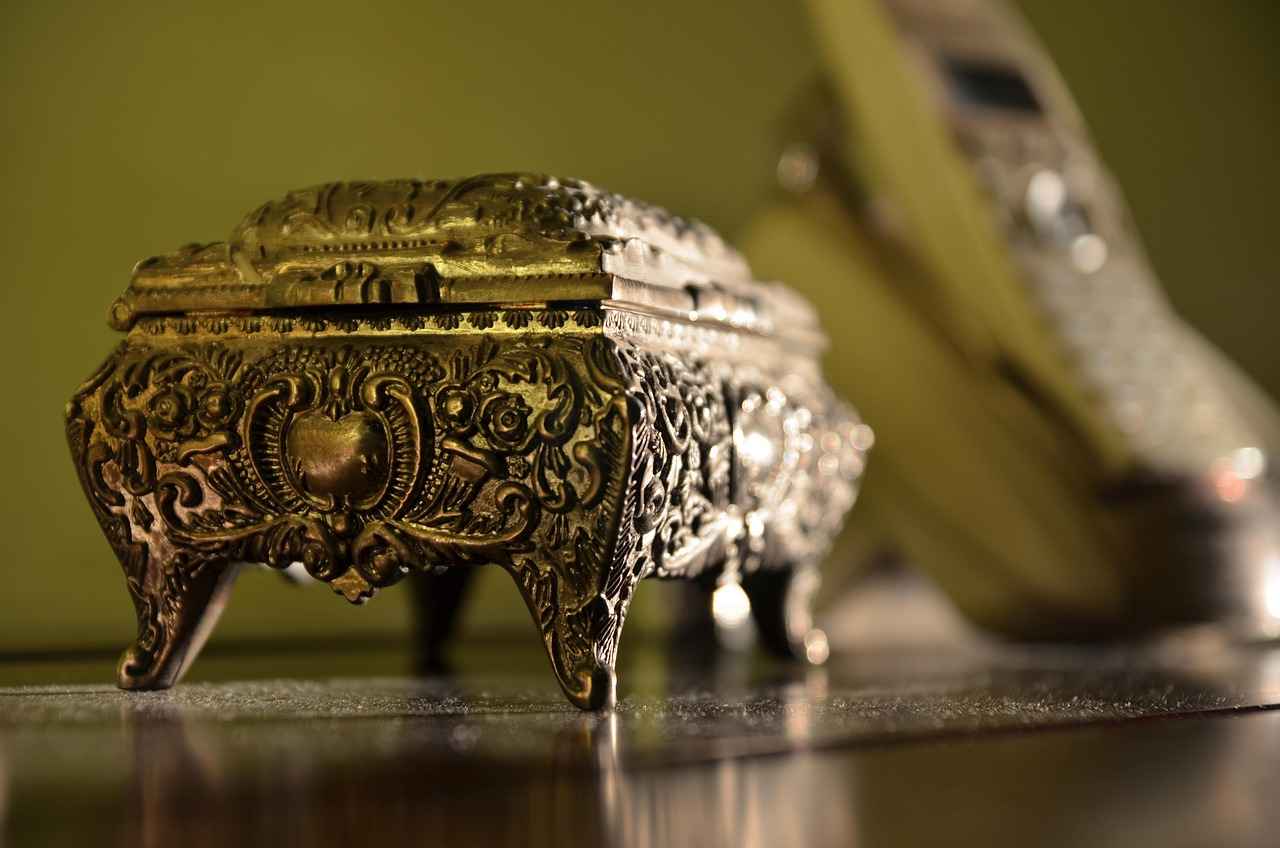
Top Ethical Jewelry Brands in the U.S.
In recent years, the jewelry industry has witnessed a significant shift towards ethical and sustainable practices. Consumers are increasingly aware of the impact their purchases have on the environment and society. This has led to a rise in demand for jewelry brands that prioritize ethical sourcing, fair labor practices, and environmental stewardship. Below, we explore some of the that are making a difference in the industry.
Understanding what constitutes ethical jewelry is essential for consumers. Ethical brands typically adhere to principles such as:
- Fair Labor Practices: Ensuring that workers are paid fairly and work in safe conditions.
- Sustainable Sourcing: Using materials that are mined or produced in an environmentally friendly manner.
- Transparency: Providing clear information about the origins of materials and the production process.
Here are some notable U.S. jewelry brands that exemplify ethical practices:
- Brilliant Earth: Known for their commitment to sustainable sourcing, Brilliant Earth offers conflict-free diamonds and recycled precious metals. They also support various social initiatives.
- Catbird: Based in Brooklyn, Catbird specializes in handcrafted jewelry using ethically sourced materials. Their focus on local artisans supports the community while promoting sustainable practices.
- Mejuri: Mejuri is a direct-to-consumer brand that emphasizes transparency in pricing and sourcing. They use ethically sourced gold and conflict-free stones, making luxury accessible without compromising ethics.
- Vrai: Vrai produces lab-grown diamonds, offering a sustainable alternative to traditional mining. Their commitment to environmental responsibility sets them apart in the luxury market.
- Ten Thousand Villages: This fair-trade retailer collaborates with artisans worldwide, ensuring fair wages and sustainable practices. Their jewelry collections feature unique, handcrafted pieces that tell a story.
Choosing ethical jewelry brands not only benefits the environment but also supports communities and artisans. By investing in these brands, consumers can:
- Make Informed Choices: Understanding the impact of their purchases helps consumers align their values with their spending.
- Encourage Sustainable Practices: Supporting ethical brands drives demand for sustainable practices in the industry.
- Empower Artisans: Many ethical brands work directly with artisans, ensuring they receive fair compensation and support for their craft.
Identifying ethical jewelry brands can be challenging. Here are some tips to help you:
- Look for certifications such as Fair Trade or Responsible Jewelry Council.
- Research the brand’s sourcing practices and transparency policies.
- Read customer reviews and testimonials to gauge the brand’s reputation.
In conclusion, the ethical jewelry movement is reshaping the industry, offering consumers a chance to make responsible choices. By supporting brands that prioritize sustainability and social responsibility, you can contribute to a more equitable and environmentally friendly future.
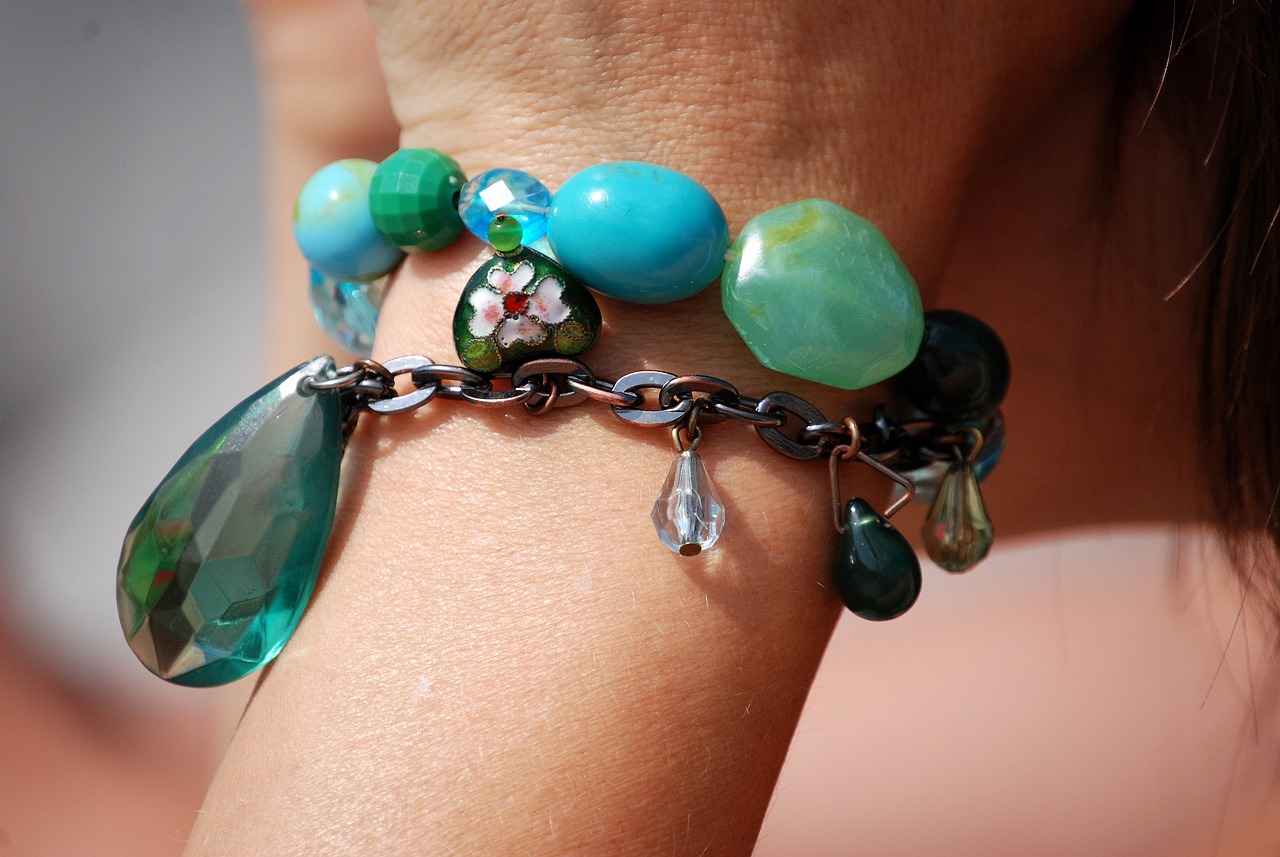
How to Identify Ethical Jewelry?
Identifying ethical jewelry can be a daunting task for consumers who want to make responsible choices. With the growing demand for sustainability, it’s essential to be well-informed about how to recognize genuine ethical practices. This section provides practical tips on identifying ethical jewelry, focusing on certifications, sourcing transparency, and the importance of asking the right questions.
One of the most effective ways to ensure that your jewelry is ethical is by looking for recognized certifications. Here are some key certifications to consider:
- Fair Trade Certified: This certification ensures that artisans receive fair wages and work in safe conditions.
- Responsible Jewelry Council (RJC): Members of this organization adhere to strict ethical and environmental standards.
- Conflict-Free Certification: This label indicates that the gemstones used are sourced without funding conflict or human rights abuses.
Transparency in sourcing is crucial for ethical jewelry. Brands should be willing to disclose where their materials come from. Here are some questions to ask:
- Where are the materials sourced from?
- Do you have a traceability system in place?
- Can you provide information about the working conditions of the artisans?
Reputable brands will have no problem answering these questions and may even provide detailed information on their websites.
Before making a purchase, take the time to research the brands you are considering. Look for:
- Brand Mission Statements: A clear commitment to sustainability and ethical practices should be evident.
- Customer Reviews: Feedback from other consumers can provide insight into the brand’s practices.
- Social Media Presence: Brands that are transparent often share their sourcing and production processes on social media.
Another effective way to identify ethical jewelry is by supporting local artisans. Often, local jewelers are more transparent about their sourcing and production practices. Engaging directly with artisans allows you to ask questions and understand their commitment to ethical practices.
Familiarizing yourself with the materials used in jewelry can also help you make informed choices. Look for:
- Recycled Metals: Jewelry made from recycled materials has a significantly lower environmental impact.
- Lab-Created Gemstones: These stones are often more ethical than mined options and can be just as beautiful.
- Natural and Organic Materials: Sustainable practices in sourcing natural materials can also indicate ethical production.
By following these tips and being proactive in your research, you can confidently identify ethical jewelry that aligns with your values. Remember, making informed choices not only supports responsible brands but also contributes to a more sustainable future.
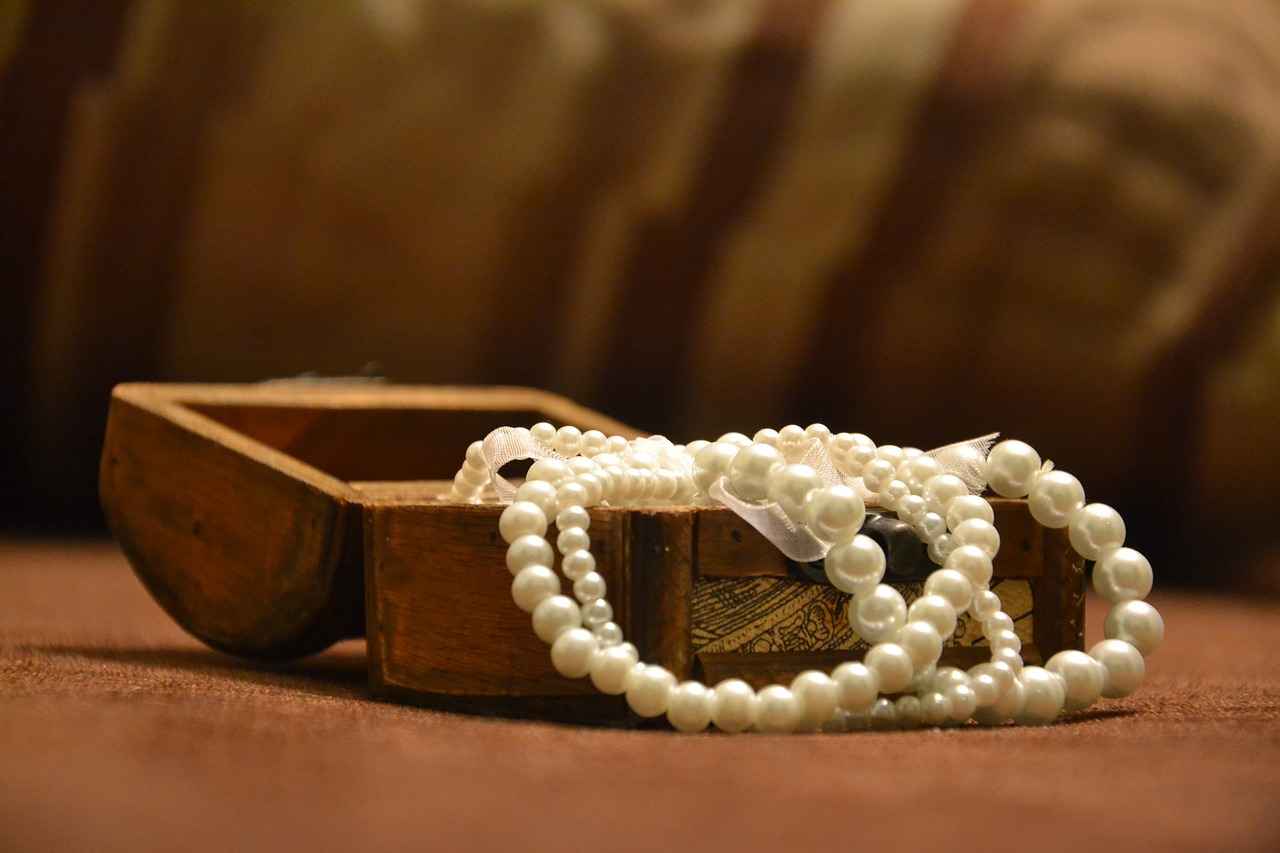
Local Artisan Markets and Fairs
Supporting local artisans is not just about finding unique jewelry; it’s also about fostering community and promoting sustainable practices. In this section, we will explore how to locate artisan markets and fairs across the United States that showcase ethical jewelry, allowing consumers to make informed choices while enjoying the charm of handcrafted pieces.
Choosing to buy from local artisans has a multitude of benefits. Firstly, it helps to boost the local economy by keeping money within the community. Secondly, local artisans often prioritize sustainable practices, using materials that are ethically sourced and environmentally friendly. Lastly, purchasing from these artisans ensures that you are getting a one-of-a-kind piece that carries a story and a personal touch.
Finding artisan markets and fairs can be an exciting adventure. Here are some practical tips to help you discover these events:
- Research Local Events: Check local community boards, social media platforms, and websites dedicated to local events. Websites like Eventbrite or Meetup often list artisan fairs and markets.
- Visit Craft Stores: Local craft stores frequently have bulletin boards with flyers about upcoming artisan markets. Don’t hesitate to ask the staff for recommendations.
- Join Local Groups: Consider joining local Facebook groups or community organizations that focus on handmade or sustainable goods. Members often share information about upcoming events.
- Attend Farmers’ Markets: Many farmers’ markets also feature local artisans selling jewelry. These markets are a great way to find unique, handcrafted pieces.
When you visit an artisan market, you can expect a vibrant atmosphere filled with creativity. Here are some elements that make these events special:
- Diverse Offerings: From beaded necklaces to silver rings, artisan markets showcase a wide variety of styles and materials.
- Meet the Makers: One of the best parts of these markets is the opportunity to meet the artisans themselves. They often share the stories behind their creations, adding value to your purchase.
- Workshops and Demonstrations: Many artisan fairs include workshops where you can learn about jewelry-making techniques, giving you a deeper appreciation for the craft.
If you can’t make it to a local market, many artisans also sell their work online. Websites like Etsy and local artisan platforms allow you to support these creators from the comfort of your home. Look for shops that emphasize ethical practices and transparent sourcing to ensure your purchase is truly sustainable.
Supporting local artisans through markets and fairs is a fulfilling way to find unique, ethical jewelry. By engaging with your community and opting for sustainable choices, you not only enhance your personal style but also contribute to a more equitable and environmentally conscious world.
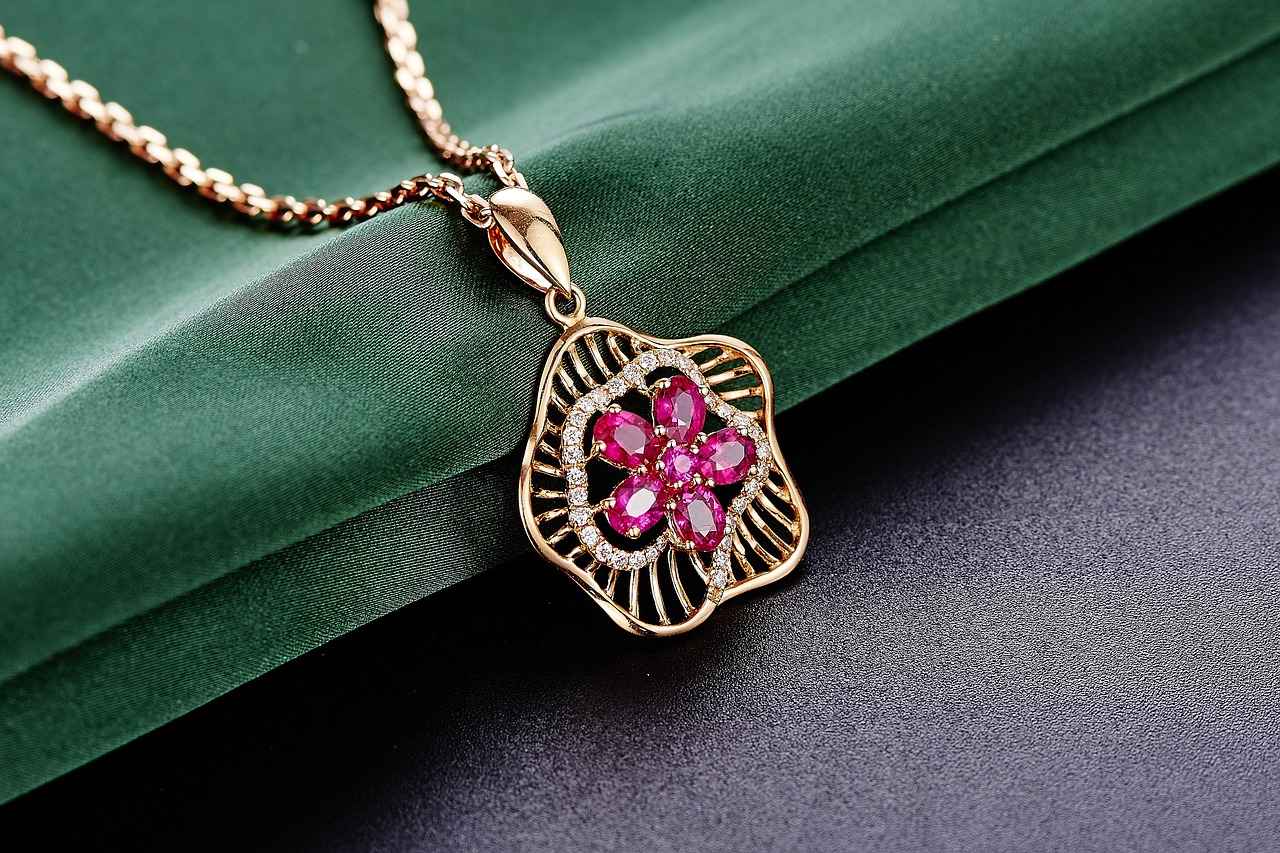
Online Platforms for Sustainable Jewelry
The digital age has transformed the way we shop, making it easier than ever to find ethical jewelry. With a growing awareness of sustainability and ethical practices, consumers are increasingly seeking out jewelry that aligns with their values. This section will explore popular online platforms where shoppers can discover and purchase sustainable jewelry from a variety of designers.
Shopping for sustainable jewelry online offers several advantages. Firstly, it provides access to a wider range of options than local stores may offer. Consumers can find unique pieces from artisans and brands across the globe, all from the comfort of their homes. Additionally, many online platforms prioritize transparency, allowing shoppers to learn about the materials and practices behind each piece.
- Etsy: A marketplace for handmade and vintage items, Etsy is a go-to platform for finding unique, ethical jewelry. Many sellers on Etsy focus on sustainable practices, using recycled materials and fair labor.
- Shopify: Many independent jewelry brands utilize Shopify to create their online stores. This platform hosts various brands committed to ethical sourcing and craftsmanship, making it easy to find sustainable options.
- Brilliant Earth: Specializing in conflict-free diamonds and ethically sourced gemstones, Brilliant Earth is dedicated to sustainability. Their commitment to transparency and ethical practices makes them a trusted choice for consumers.
- Ten Thousand Villages: This online retailer focuses on fair trade products, including a beautiful selection of ethical jewelry. By purchasing from Ten Thousand Villages, customers support artisans from developing countries.
- Made Trade: A curated marketplace for ethically made goods, Made Trade features a variety of sustainable jewelry options. They prioritize fair labor practices and eco-friendly materials.
When searching for sustainable jewelry online, it’s essential to consider a few key factors:
- Materials: Look for jewelry made from recycled metals, ethically sourced gemstones, or sustainable materials like wood and glass.
- Transparency: Choose brands that openly share their sourcing practices and provide information about their supply chain.
- Certifications: Certifications from recognized organizations can indicate a brand’s commitment to ethical practices.
Many online platforms allow consumers to support local artisans while shopping for ethical jewelry. By choosing to purchase from these platforms, shoppers can contribute to the livelihoods of artisans and promote sustainable practices within their communities.
As the demand for ethical jewelry continues to rise, online platforms play a crucial role in connecting consumers with sustainable options. By exploring these platforms, shoppers can find beautiful pieces that not only enhance their style but also align with their values of sustainability and ethical sourcing.
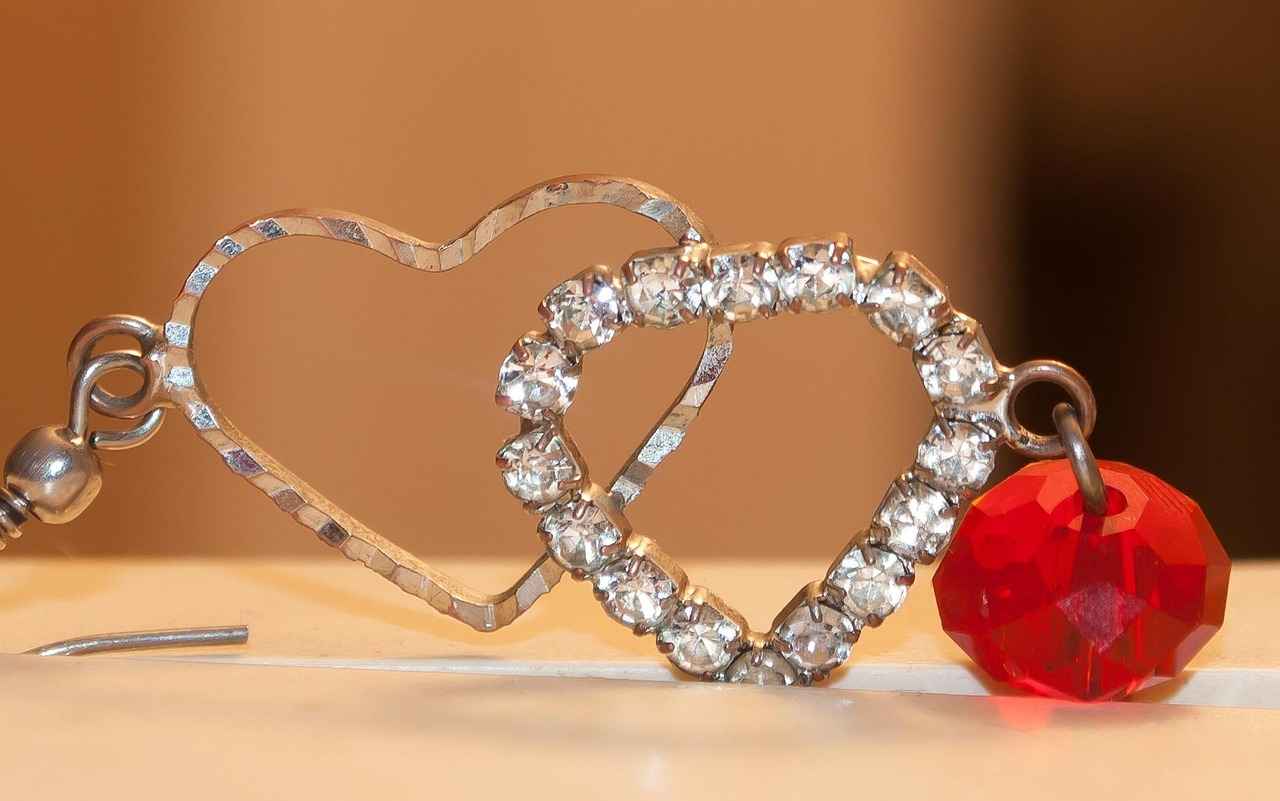
Materials Used in Ethical Jewelry
When it comes to ethical jewelry, understanding the materials used is essential for making informed choices. Ethical jewelry not only emphasizes aesthetic appeal but also prioritizes sustainability and social responsibility. This section delves into the various sustainable materials that are commonly used in ethical jewelry, shedding light on their significance and impact.
Sustainable materials are those that are sourced and processed in ways that are environmentally friendly and socially responsible. By opting for these materials, consumers can make a positive impact on the planet and support ethical practices. Below, we explore some key materials used in ethical jewelry:
- Recycled Metals: One of the most significant advancements in ethical jewelry is the use of recycled metals. Gold, silver, and platinum can be reclaimed from old jewelry, electronics, and industrial scraps. This process reduces the need for mining, which is often detrimental to the environment.
- Conflict-Free Gemstones: Ethical jewelry brands often source gemstones that are certified conflict-free, meaning they are not mined in war zones or sold to finance armed conflict. This certification ensures that the stones are sourced from mines that adhere to strict ethical guidelines, promoting fair labor practices and community development.
- Lab-Created Gemstones: Another innovative option is lab-created gemstones, which have the same physical and chemical properties as their natural counterparts but are produced in controlled environments. This method significantly reduces environmental impact and eliminates the ethical concerns associated with traditional mining.
- Organic Materials: Many artisans are turning to organic materials such as wood, seeds, and shells. These materials are often sourced sustainably and can be biodegradable, making them an eco-friendly choice.
The importance of using sustainable materials in ethical jewelry cannot be overstated. By choosing pieces made from recycled metals and conflict-free gemstones, consumers are actively participating in a movement that promotes environmental conservation and social justice. These materials not only reduce the ecological footprint of jewelry production but also support communities that rely on ethical labor practices.
Identifying ethical materials can be challenging, but there are several ways to ensure that you are making responsible choices:
- Look for certifications: Many ethical jewelry brands display certifications that verify their materials are sustainably sourced and conflict-free.
- Research the brand: Understanding a brand’s sourcing practices and transparency can provide insight into their commitment to ethical materials.
- Ask questions: Don’t hesitate to reach out to jewelers and ask about the origins of their materials. A reputable jeweler will be happy to share this information.
In conclusion, the materials used in ethical jewelry play a crucial role in shaping a more sustainable and responsible industry. By choosing pieces made from recycled metals, conflict-free gemstones, and other sustainable materials, consumers can make a meaningful difference. The growing awareness and demand for ethical jewelry are paving the way for a brighter future, where beauty and responsibility go hand in hand.
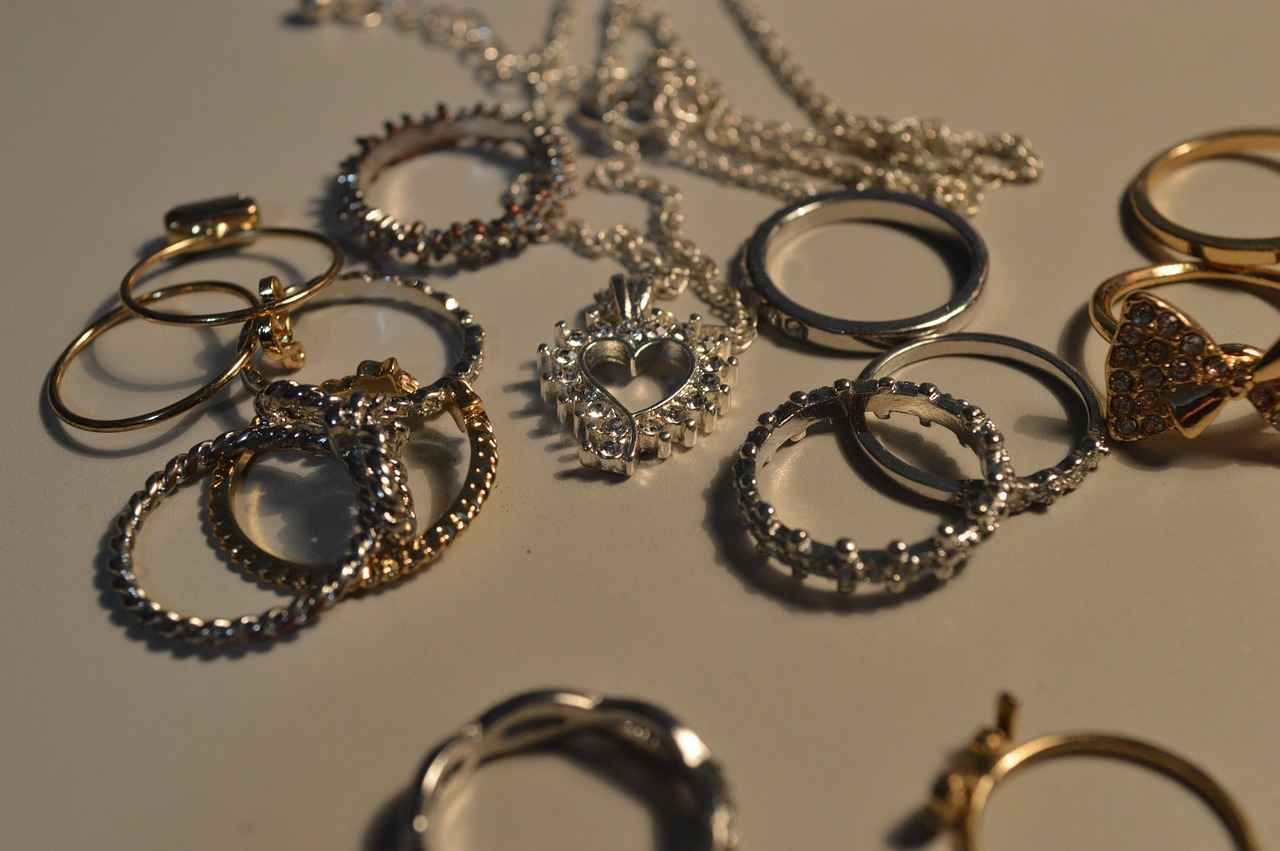
The Impact of Ethical Jewelry on Communities
Ethical jewelry is not just a fashion statement; it represents a commitment to social responsibility and sustainable practices. The impact of ethical jewelry on communities is profound, influencing not only the artisans who create these pieces but also the broader economic landscape of local areas. This section delves into the multifaceted benefits that arise from supporting ethical jewelry practices.
- Empowering Local Artisans: Ethical jewelry brands often work closely with artisans in local communities, providing them with fair wages and safe working conditions. This empowerment allows artisans to maintain their cultural heritage while also gaining financial independence.
- Economic Growth: By prioritizing local craftsmanship, ethical jewelry initiatives stimulate economic growth. When consumers purchase these products, they contribute directly to the livelihoods of artisans and their families, fostering a cycle of economic stability.
- Community Development: Many ethical jewelry brands invest in community development projects. These can range from providing education and healthcare to supporting local infrastructure. Such initiatives help improve the quality of life in communities where artisans reside.
- Environmental Sustainability: Ethical jewelry often utilizes sustainable materials, which reduces the environmental impact of mining and manufacturing processes. This commitment to sustainability helps protect local ecosystems and promotes biodiversity.
- Creating Awareness: Ethical jewelry serves as a platform for raising awareness about social and environmental issues. Artisans and brands often share their stories, educating consumers about the importance of ethical sourcing and fair labor practices.
Furthermore, ethical jewelry fosters a sense of community among consumers who value transparency and responsibility. By choosing ethical pieces, consumers become part of a movement that champions the rights of artisans and promotes sustainable practices. This collective effort can lead to significant changes in the jewelry industry, encouraging more brands to adopt ethical practices.
In addition to the economic and social benefits, ethical jewelry promotes a sense of pride among artisans. When they create pieces that reflect their culture and heritage, it not only showcases their skills but also instills a sense of accomplishment and recognition. This pride can lead to a resurgence of traditional crafts that may have been lost in the face of mass production.
As consumers become more aware of the impact of their purchases, the demand for ethical jewelry continues to rise. This shift in consumer behavior is essential for driving change within the industry. When consumers prioritize ethical options, they send a strong message to brands about the importance of sustainability and social responsibility.
In conclusion, the impact of ethical jewelry on communities is significant and far-reaching. From empowering artisans to promoting economic growth and environmental sustainability, the benefits are numerous. By choosing ethical jewelry, consumers not only adorn themselves with beautiful pieces but also contribute to a larger movement that values people and the planet.
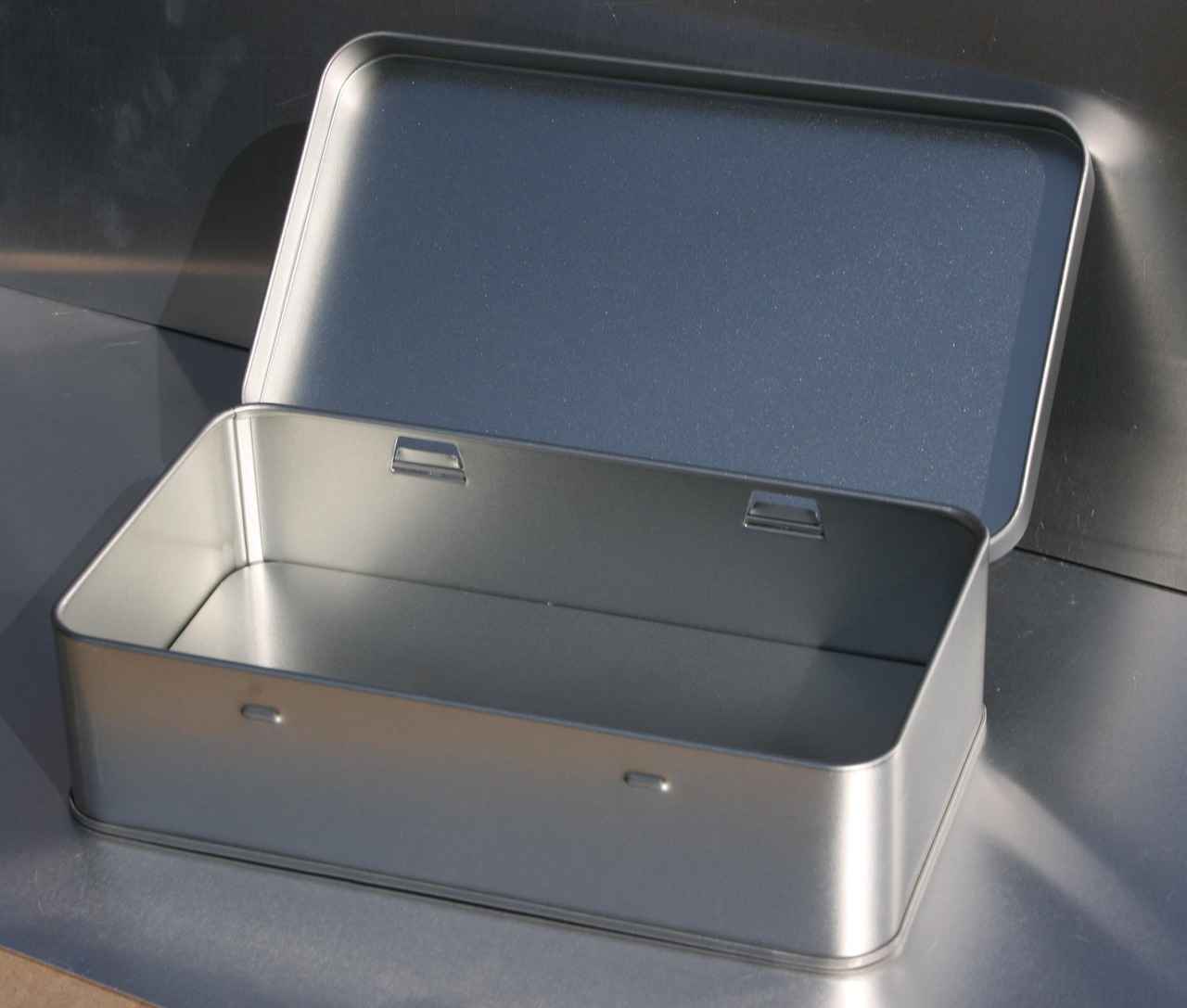
Future Trends in Ethical Jewelry
The ethical jewelry market is continuously evolving, reflecting a growing awareness of sustainability and social responsibility among consumers. As the landscape shifts, several emerging trends and innovations are shaping the future of sustainable jewelry in the United States.
- Increased Transparency: Consumers are demanding greater transparency regarding the sourcing and production of jewelry. Brands are now providing detailed information about their supply chains, including the origins of materials and the conditions under which they are produced.
- Lab-Grown Gemstones: The rise of lab-grown diamonds and gemstones is transforming the market. These alternatives are often more affordable and environmentally friendly, appealing to a new generation of consumers who prioritize ethical considerations.
- Recycled Materials: More jewelers are utilizing recycled metals and materials to create new pieces. This practice not only reduces waste but also minimizes the environmental impact associated with mining.
- Personalization and Customization: Consumers are increasingly seeking unique pieces that reflect their personal values and stories. Customizable jewelry allows for a deeper connection between the wearer and the piece, often incorporating ethical materials.
Leading ethical jewelry brands are embracing innovative practices to enhance their sustainability efforts. Many are adopting fair trade principles, ensuring that artisans receive fair wages and work in safe conditions. Additionally, brands are collaborating with local communities to create unique pieces that celebrate cultural heritage while promoting economic growth.
Technology is playing a significant role in the evolution of ethical jewelry. From blockchain technology ensuring traceability of materials to 3D printing that reduces waste, tech innovations are enabling brands to operate more sustainably. These advancements not only streamline production but also provide consumers with more information about their purchases.
As awareness of environmental and ethical issues grows, consumers are increasingly prioritizing sustainability in their purchasing decisions. Many are willing to pay a premium for jewelry that aligns with their values, leading to a shift in the market dynamics. This change is prompting more brands to adopt sustainable practices to meet consumer demand.
The future of ethical jewelry looks promising, with a continued emphasis on sustainability, innovation, and consumer education. As more individuals become conscious of their purchasing power, the demand for ethically produced jewelry will likely drive further advancements in the industry.
In conclusion, the ethical jewelry market is not just a passing trend; it represents a significant shift towards a more sustainable and responsible approach to fashion. As brands adapt and innovate, consumers can look forward to a diverse array of options that not only enhance their personal style but also contribute positively to the world.
Frequently Asked Questions
- What defines ethical jewelry?
Ethical jewelry is crafted with a commitment to social and environmental responsibility. This means fair labor practices, sustainable sourcing, and a transparent supply chain. It’s all about making choices that not only look good but also do good!
- Why should I choose sustainable jewelry?
Choosing sustainable jewelry helps protect the planet and supports local artisans. By opting for these pieces, you’re contributing to environmental conservation and promoting fair trade practices. It’s like wearing a badge of honor for making responsible choices!
- How can I identify ethical jewelry?
Look for certifications, such as Fair Trade or recycled materials. Check if brands are transparent about their sourcing and labor practices. If you can trace where the materials come from, you’re on the right track!
- Where can I find local artisan markets?
Local artisan markets are often listed on community boards, social media, or local event websites. They’re a treasure trove for unique, ethical jewelry crafted by talented artisans!
- What materials are commonly used in ethical jewelry?
Ethical jewelry often features recycled metals, conflict-free gemstones, and sustainable materials like lab-grown diamonds. These choices not only reduce environmental impact but also ensure fair labor practices.
